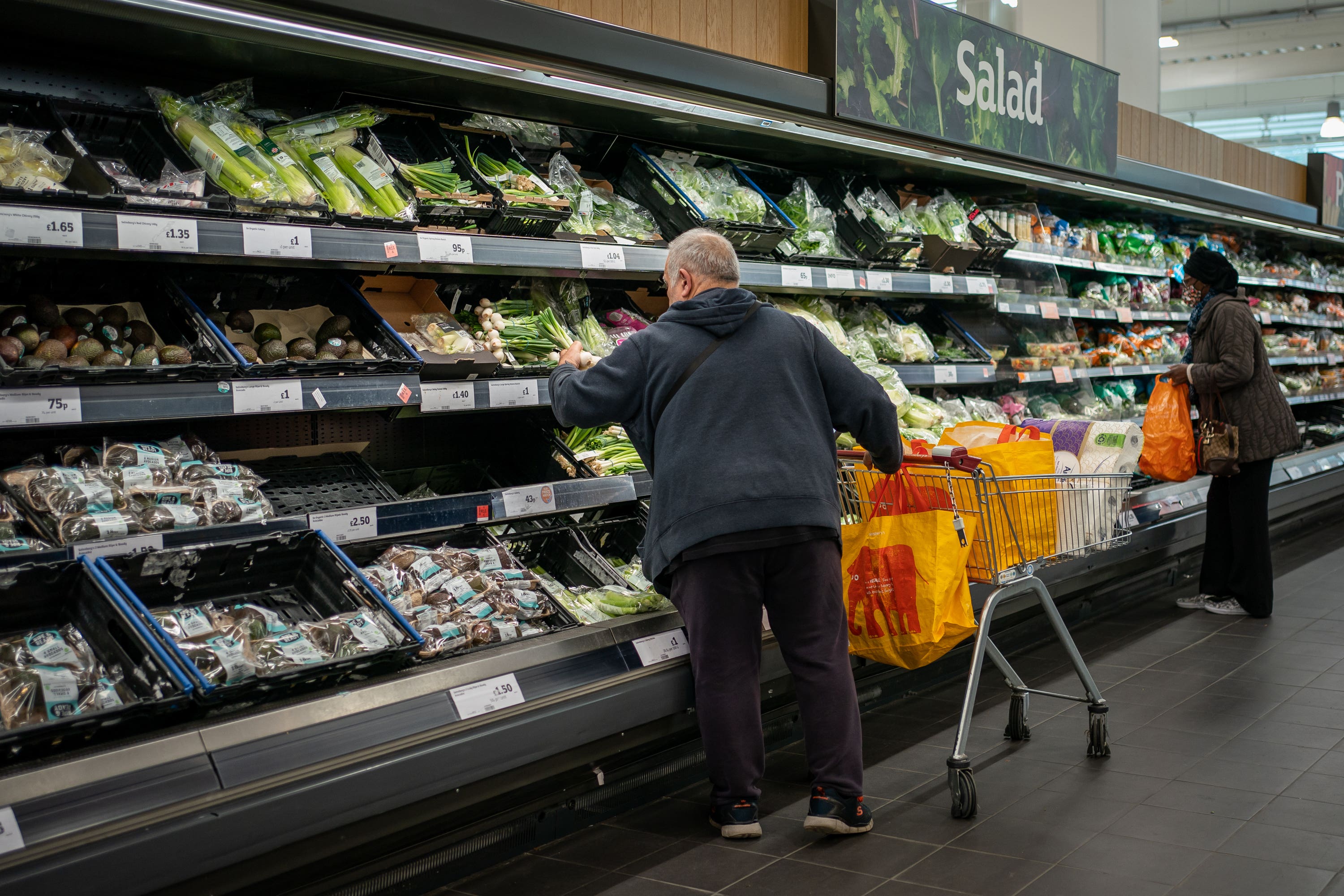Why I’m banking on a sudden fall in inflation
The January rate has remained at 4 per cent, with a shallow recession likely by the end of the year – but, says James Moore, if you look closely, the economy is showing signs of recovery


The headlines will tell you that the January rate of inflation came in unchanged at 4 per cent. Context, however, is everything – and that actually represents a good result. Those of us who watch these numbers – yes, it’s a glam life that I lead – will tell you that we were expecting to see an increase this month, albeit a temporary one.
The biggest driver for the recent, very welcome, downward trend from the peak of 11.1 per cent recorded in October 2022 has been falling energy prices and an end to last year’s power price spike that left people shivering in chill homes, even after the government stepped in to subsidise sky-high bills. However, that went into reverse in January with a rise in Ofgem’s price cap. For the first time in many months, energy pushed inflation higher.
Fortunately, this was offset by heavy discounting in the furniture sector and, best of all, a monthly fall in food prices. For the first time since September 2021, January saw the first monthly fall in food prices – with the price of crackers, cake and crisps leading the charge and helping to offset the rise in electricity and gas.
These last few years, the impact of inflation on lower-income households has been brutal, and it’s still no bed of roses. The average annual food bill is several hundred pounds more expensive than it was a couple of years back, even for those who made efforts to reduce their personal rates of inflation by (for example) switching to cheaper, own-label products. January’s food prices were still 7 per cent higher than a year earlier.
But the trend has nonetheless been moving firmly in the right direction. The worry is that the government’s mulish insistence on imposing border checks on food imported from the EU may stall the momentum. We shall see.
That’s the good news. However, I don’t think those hoping for an early interest rate cut shouldn’t get too excited. Core inflation, which excludes food and energy as well as tobacco, all of which are volatile and prone to multiple external factors that the Bank of England has little influence over, also held steady at 5.1 per cent. It has consistently come in above the headline rate.
Another number to watch – because the Bank’s rate-setting Monetary Policy Committee (MPC) does – is the rate of service price inflation. It increased for the second month in a row, to 6.5 per cent from 6.4 per cent. Those looking for crumbs of comfort can find it. Both numbers were, for example, below their forecast level. But remember that even at 4 per cent, the headline rate of inflation remains at double the Bank’s target.
The latest labour market data also showed that while vacancies continued to fall as did wage growth the latter, at 6.2 per cent, is uncomfortably high for the MPC. Unemployment remains very low (3.8 per cent) and persistently high levels of sickness are making it hard for employers to find the workers they need, which puts upward pressure on pay.
While the MPC’s stance has shown some muted signs of softening – the last vote saw two members opting for a rise, six for no change and one calling for a cut against three for a rise, six no change – I suspect it will continue to take a cautious approach even in the face of the economic damage caused by higher rates.
The UK is expected to have fallen into a shallow recession at the end of the year and the economy remains sluggish at best. The clamour for a cut, particularly from small businesses which are very much at the sharp end of this, is going to increase only over the coming months. Inflation should continue to fall. Those energy prices I mentioned? Ofgem is set to reduce the cap next time around, which will reduce the headline rate again. There is a realistic prospect of it falling to the Bank’s 2 per cent target in the next few months.
Capital Economics, a consultancy, thinks the number could even dip below it in April, with core inflation easing to 3 per cent and services to 5 per cent: “All this would make the BoE much more comfortable with cutting interest rates, perhaps in June. Moreover, our forecast that inflation will fall below 1 per cent later this year explains why we think rates will have to be reduced to 3 per cent next year, which is much further than current market pricing.”
I’m not so sure that I would use the word “comfortable”, particularly at a time when two MPC members are still calling for rate rises. The Bank has cautioned that it expects the move towards target to be only “temporary”.
“Increasingly, there are no good options for central bankers,” said Nicholas Hyett, an investment manager at the Wealth Club. I would tend to agree with that assessment. The calls for an early cut are only going to get louder to ease the pressure on both domestic and business borrowers. The central banker’s lot is not a happy one at the current juncture. But making the tough decisions is what they get paid for.
Having watched the MPC for a long time, I think its members will be slower to move than many people hope, unless Capital Economics is right and inflation really does fall out of bed and hit the floor a lot quicker than the Bank currently expects.






Join our commenting forum
Join thought-provoking conversations, follow other Independent readers and see their replies
2Comments